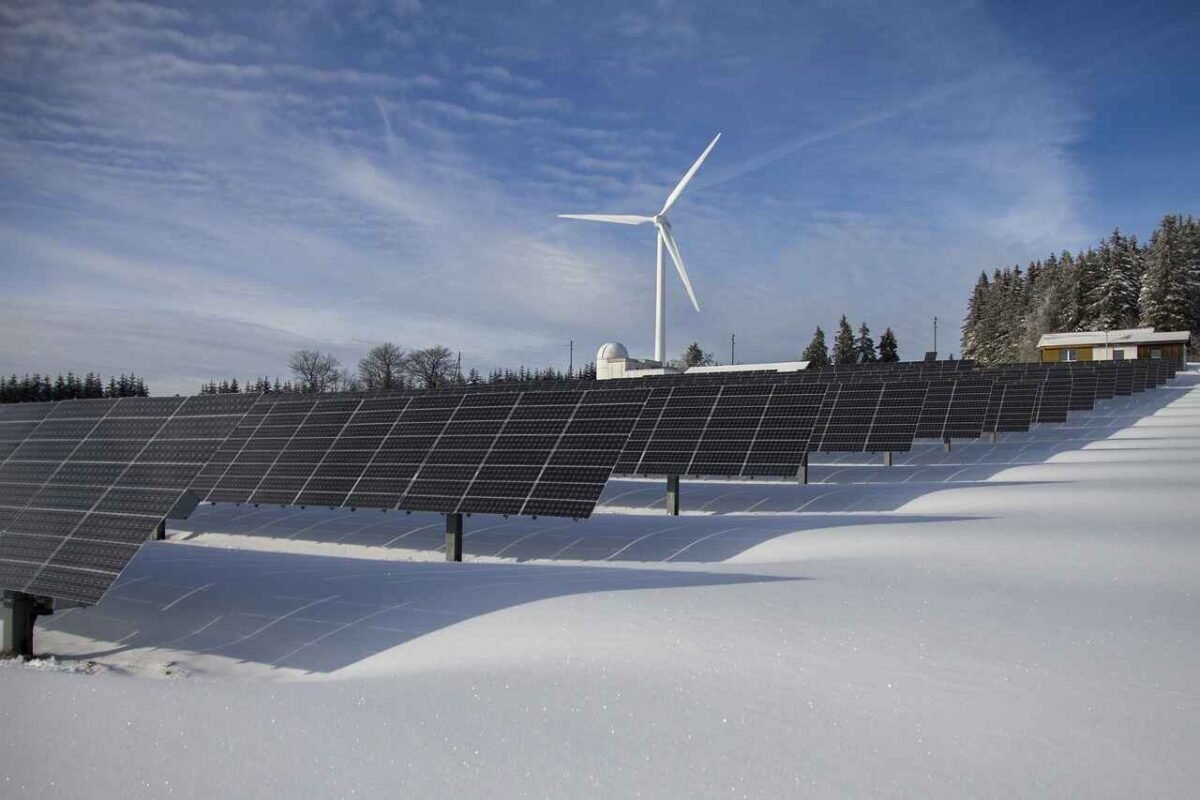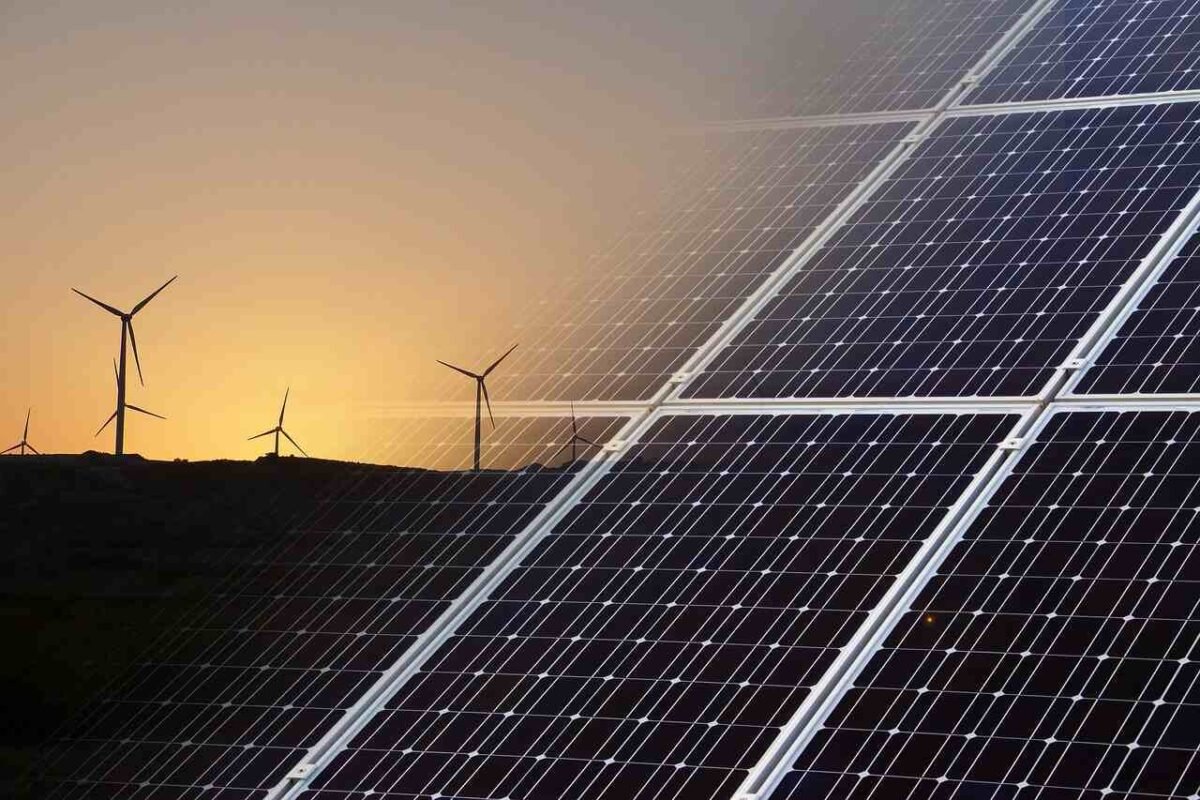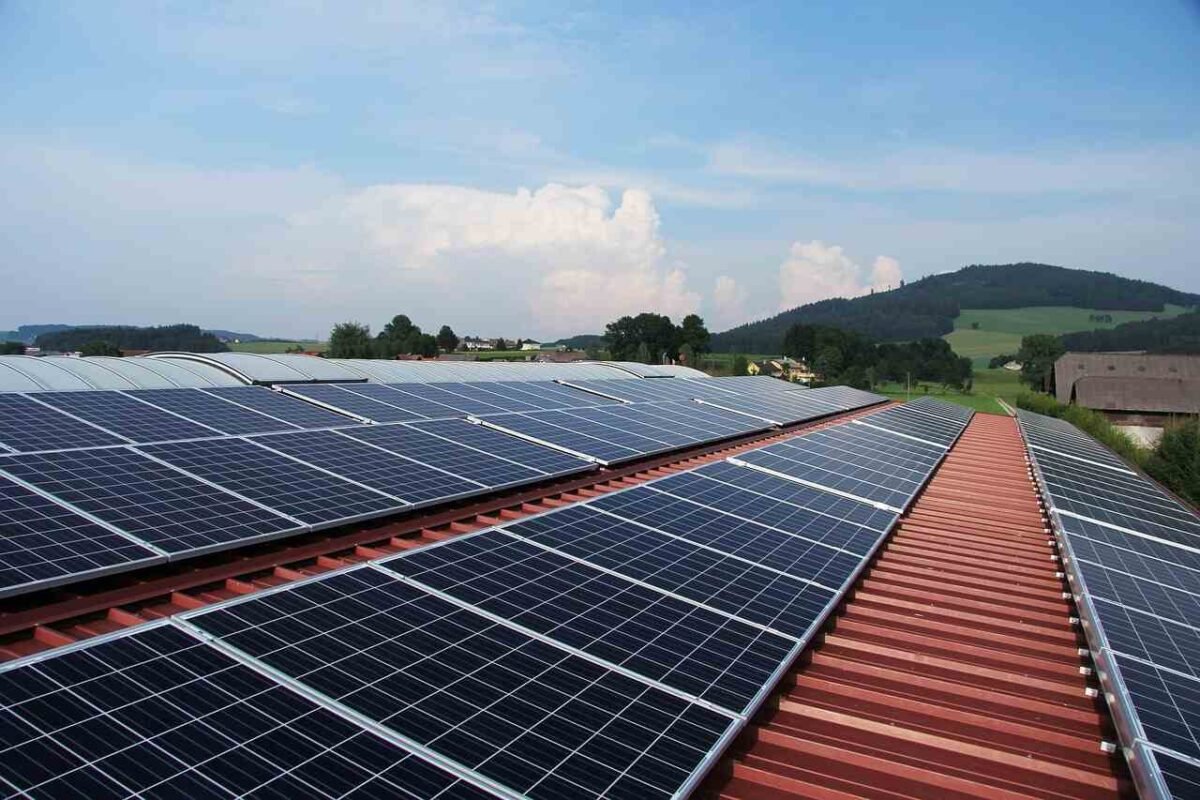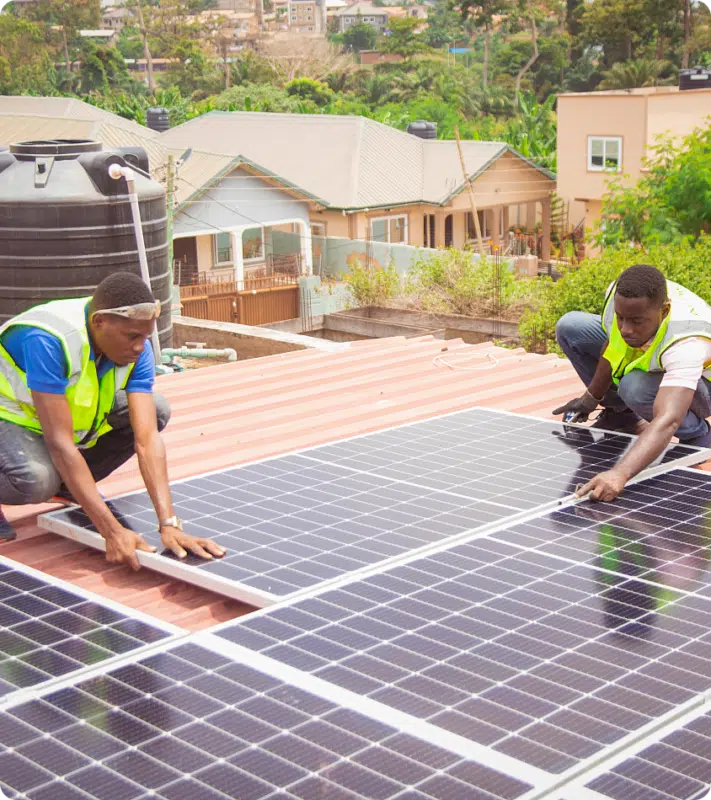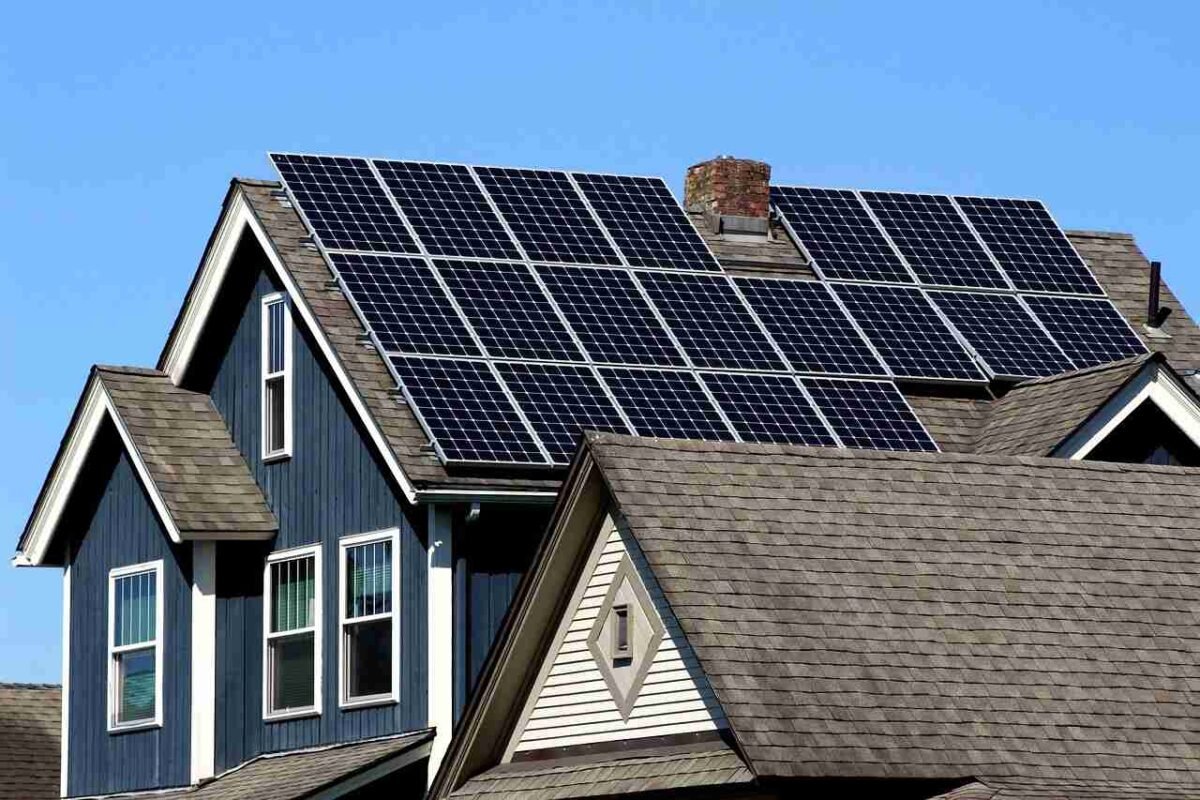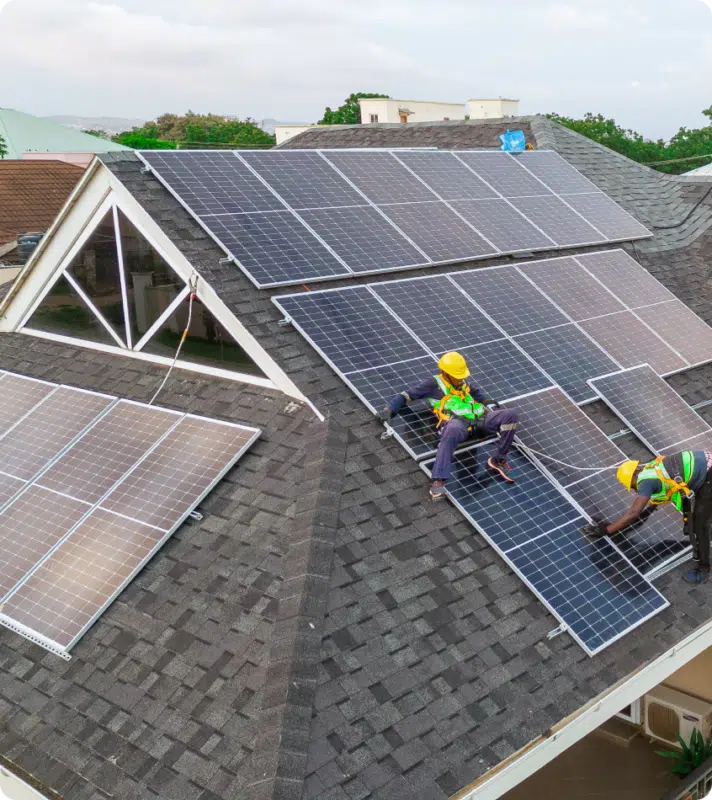Blogs
Solar Power Pros and Cons: An Enlightening Guide

Learn the pros and cons of solar power in this detailed guide. Understand the benefits, challenges, and key factors to help you make an informed decision about switching to solar energy.
Harnessing the sun’s energy offers clean power with both benefits and drawbacks. Solar power is a hot topic in today’s energy discussions. It’s a renewable resource with the potential to reduce carbon footprints and utility bills alike, but is it all sunshine and savings? The reality is that while solar energy can be a great asset, it isn’t without its set of challenges.
Deciding to go solar is a big move for any homeowner or business. This energy shift can mean lower energy costs and a step towards a greener planet. Yet, upfront costs and geographic limitations can give pause. Over the next few paragraphs, we’ll shine a light on the Solar Power Pros and Cons. We’ll explore how solar panels work and their impact on the environment. We’ll also weigh factors like installation costs and the reliance on weather conditions. Understanding these factors is key to making an informed decision about whether solar power is right for you. Let’s dive into the bright world of solar energy, uncover the Solar Power Pros and Cons, and discover its potential for your home or business.
The Rise Of Solar Power
Solar power is gaining popularity due to its eco-friendly nature. This energy source has benefits and drawbacks, impacting its global adoption.
The rise of solar power is a testament to human innovation and our relentless pursuit of cleaner energy. This shining beacon of renewable energy is transforming the way we power our homes, businesses, and cities. It’s no longer a question of if solar energy will be a major player in the global energy mix, but rather how quickly it will ascend to dominance. Let’s embark on a journey through the pivotal historical milestones that have brought us to today’s solar revolution and explore the current trends propelling us toward a brighter, more sustainable future.
Historical Milestones In Solar Energy
Did you know that the journey of solar power began in the 7th century B.C.? Legend has it that humans used magnifying glasses to concentrate the sun’s rays and make fire. Fast forward to 1839, when French physicist Edmond Becquerel discovered the photovoltaic effect, which is the principle behind solar panels. But it wasn’t until 1954 that Bell Labs in the U.S. created the first practical silicon solar cell, the progenitor of all modern solar panels. This milestone ignited a spark that would grow into the solar inferno we see today.
By the 1970s, amidst oil embargoes and growing environmental awareness, solar power became not just a novelty but a necessity. Giving rise to the first significant wave of solar technology adoption. Then, in 1981, the first solar-powered aircraft, Solar Challenger, soared across the English Channel, proving that the sun’s energy could propel not just stationary objects but also our dreams of flight.
However, as we continue to explore the world of solar energy, it’s important to consider the Solar Power Pros and Cons. While solar power offers a clean and renewable source of energy, it also comes with its own set of challenges, like dependence on sunlight and initial installation costs. Understanding the Solar Power Pros and Cons helps consumers make informed decisions, balancing the benefits with the potential drawbacks.
Current Trends In Solar Technology Adoption
Today, solar energy is experiencing an unprecedented boom. Have you noticed more solar panels on rooftops in your neighborhood? That’s because residential solar installations have become more affordable than ever, thanks to advancements in technology and economies of scale. In fact, the International Energy Agency crowned solar power as the “new king” of electricity markets, forecasting that it will set new records for deployment each year after 2022.
Globally, countries are racing to outshine each other with ambitious solar projects. China, for example, is home to the world’s largest solar farm, while Morocco’s Noor Complex will soon power over a million homes with nothing but the sun. Even in the corporate realm, giants like Google and Apple are making massive investments in solar energy to power their data centers and offices with 100% renewable energy.
But what does all this mean for you? With solar technology becoming more accessible, you have the power to take charge of your energy future. Imagine reducing your electric bill to almost nothing and potentially even selling excess electricity back to the grid. It’s not just about savings; it’s about being part of a global movement towards sustainability and energy independence.
So, as you ponder the idea of harnessing the power of the sun, consider this: are you ready to be part of the solar revolution that’s reshaping our world? Solar energy isn’t just an alternative anymore; it’s a mainstream solution that’s lighting up lives, one rooftop at a time.
Harnessing The Sun: How Solar Panels Work
Exploring solar power reveals its strengths and weaknesses. Solar panels transform sunlight into energy, but it’s not all sunshine; there are drawbacks to consider.
Harnessing the sun’s energy through solar panels is not just an innovative solution; it’s a transformative power source that’s reshaping how we think about and use energy. Understanding how solar panels work demystifies the process and highlights the incredible potential of this green technology. Let’s dive into the fascinating world of solar power, exploring the basic principles of photovoltaic cells and the journey from sunlight to electricity. ###
Basic Principles Of Photovoltaic Cells
At the heart of every solar panel are photovoltaic (PV) cells, the wizards behind the curtain turning sunlight into electricity. Imagine these cells as diligent workers, tirelessly capturing sunlight and converting it into something we can use to power everything from our homes to our gadgets. But how do they do it? PV cells are made from materials like silicon, which is adept at absorbing sunlight. When sunlight hits these cells, it excites electrons, creating a flow of electrical current. This process, known as the photovoltaic effect, is the cornerstone of solar power technology. It’s a clean, elegant solution to harnessing the boundless energy of the sun. ###
From Sunlight To Electricity: The Conversion Process
The journey from a beam of sunlight to the electricity that charges your phone is a fascinating one. Once the PV cells have captured sunlight and generated an electrical current, this energy still needs to be transformed into a form we can use in our homes. This is where inverters come into play. The electricity generated by solar panels is in direct current (DC) form, which isn’t compatible with most home appliances that operate on alternating current (AC).
Inverters bridge this gap by converting DC into usable AC, completing the transformation from sunlight to electricity. But the magic doesn’t stop there. Excess energy can be stored in batteries for later use, or even fed back into the grid, potentially earning you credits on your energy bill. This not only maximizes the efficiency of your solar power system but also contributes to a more sustainable and resilient energy grid.
Have you ever wondered what happens to solar power on cloudy days? Thanks to advances in PV cell technology and energy storage, solar panels can still generate and store energy, albeit at a reduced rate. This ensures a steady, reliable source of green energy, come rain or shine. Harnessing the sun’s power through solar panels is a testament to human ingenuity and our commitment to sustainable living.
By converting the abundant energy of sunlight into electricity, we’re tapping into an inexhaustible, clean energy source that has the potential to power our world without harming the planet. The next time you bask in the warmth of the sun, remember the incredible journey of that sunlight, from the vastness of space to the flick of a switch in your home. Isn’t it time we all considered the boundless potential of solar power in our lives?
Environmental Impact: Solar Energy’s Green Footprint
Solar energy reduces pollution, offering a cleaner energy choice. It has its ups and downs, with sustainability being a major advantage.
As the world shifts towards cleaner energy sources, solar power emerges as a shining beacon of sustainability. The environmental impact of harnessing the sun’s energy extends beyond mere electricity generation; it’s about creating a green footprint for future generations. This shift to solar is not just a technological evolution—it’s a necessary transformation to protect the planet we call home.
Reduction Of Greenhouse Gas Emissions
The move to solar energy represents a significant leap in curbing our carbon footprint. Unlike fossil fuels, which release copious amounts of carbon dioxide into the atmosphere, solar panels produce electricity without emitting greenhouse gases. By converting sunlight directly into power, solar panels operate silently and cleanly, acting as silent guardians against climate change. The immediate impact? A considerable reduction in the use of carbon-heavy energy sources and a hopeful step towards meeting global climate targets. Imagine powering your home, business, or community with the pure, guilt-free energy of the sun. It’s a powerful thought, isn’t it?
Solar Power And Wildlife: Finding A Balance
While solar farms are a boon for the environment, they can also pose challenges to local wildlife. The key is finding a harmonious balance. Thoughtfully designed solar installations can coexist with natural habitats, ensuring that the push for clean energy doesn’t come at the expense of our planet’s biodiversity. Developers are becoming more aware and are implementing strategies such as leaving space for wildlife corridors and avoiding ecologically sensitive areas. Have you ever seen a solar farm abuzz with life, from buzzing bees to grazing sheep? It’s a testament to the fact that renewable energy and nature can thrive side by side.
Harnessing solar power is more than just saving on electricity bills—it’s about investing in the health of our environment. As you consider the switch to solar, think about the clean legacy you’ll be leaving behind. How does it feel to be part of a solution that is as good for the earth as it is for your conscience?
Economic Aspects Of Solar Power
Exploring the economic aspects of solar power reveals a mixed bag of costs and benefits. The financial impact of solar energy touches individual budgets and the broader economy. Let’s dig into the initial expenses and long-term savings. We’ll also look at how solar power fuels job growth.
Initial Costs Vs Long-term Savings
Solar panels come with a notable upfront price. Installation and equipment can strain wallets. Yet, over time, they offer significant savings. Lower electricity bills help balance the scales. Homeowners often recover their investment within a few years.
Job Creation And The Solar Industry
The solar sector is a bright spot for employment. As green energy grows, so do job opportunities. This industry provides a variety of roles, from manufacturing to installation. Communities benefit from this surge in employment, boosting local economies.
Advantages Of Solar Energy
Solar energy stands out as a clean, green source of power. It comes directly from the sun. This energy can power homes and businesses. It’s a way to cut down on electricity bills. Solar panels capture the sun’s rays. They turn sunlight into electricity. This process doesn’t harm the planet.
Renewability And Abundance Of Solar Resources
The sun is a powerful source of energy. It shines every day. Solar energy is renewable. This means it won’t run out, unlike oil or coal. The sun sends enough energy to Earth in one hour. This energy can meet global power needs for a year. Everywhere around the world has some sunlight. This makes solar energy possible anywhere.
Energy Independence And Security
Using solar energy can reduce reliance on foreign oil and fossil fuels. This leads to greater energy independence. Countries can produce their own energy. This makes them less dependent on imports. Solar energy is also secure. It’s less likely to be affected by geopolitical issues or supply chain disruptions. Homes with solar panels don’t worry about power outages as much. They have their own power source.
Challenges Facing Solar Power
Solar power stands as a beacon of clean energy, but it’s not without challenges. Understanding these hurdles is key to advancing its role in our energy mix. From the sun’s inconsistent presence to the impact of material use, let’s explore the obstacles that solar energy must overcome.
Intermittency And Storage Issues
The sun doesn’t shine all the time. This simple fact creates a major challenge for solar power: intermittency. Energy production dips at night or during cloudy weather. This calls for reliable storage solutions. Batteries can help, but they’re not yet perfect. They can be expensive and have limited capacity. Innovations in storage tech are crucial for a solar-dominated future.
Material Sourcing And Sustainability Concerns
Solar panels need materials like silicon, silver, and aluminum. Getting these materials often involves mining. This process can harm the environment. It can also be costly and energy-intensive. Recycling old panels is a step forward. It can reduce the need for new materials. But recycling systems are still growing. Better recycling and sustainable sourcing are vital for solar’s green promise.
Innovation In Solar Technology
Solar technology evolves to meet diverse energy needs. Understanding its strengths and weaknesses is essential for informed decisions.
Innovation in Solar Technology is revolutionizing the way we harness the sun’s power. As we stride further into the 21st century, solar technology is not just about placing panels on rooftops anymore. It’s about integrating cutting-edge advancements that elevate efficiency and storage capabilities to meet the world’s growing energy demands. The latest developments are ensuring that solar energy is not just a backup plan, but a primary source of clean, renewable, and sustainable power.
Advancements In Solar Panel Efficiency
One of the most exciting breakthroughs in solar technology has been the significant improvements in solar panel efficiency. The quest to get more power from the same rays of sunshine has led to the creation of panels that convert more sunlight into electricity than ever before. These high-efficiency panels are a game-changer, especially in areas where space is at a premium. Imagine powering your entire home using fewer panels and still having room to grow your favorite rooftop garden! This isn’t a distant dream; it’s a reality that’s unfolding right before our eyes.
For instance, the introduction of bifacial solar panels, which capture sunlight from both sides, is like hitting two birds with one stone. You harness the direct sunlight and also the reflected light from the surrounding environment. This technology can lead to an increase in energy production by up to 30%, a number that was unfathomable just a decade ago. With these advancements, your transition to solar is not just environmentally conscious, it’s becoming increasingly economically savvy.
Emerging Solar Energy Storage Solutions
As the sun sets, the question of “What happens when solar panels aren’t soaking up sunlight?” comes to mind. This is where the emerging solar energy storage solutions shine. The development of more efficient and longer-lasting solar batteries means that the energy produced during the day can light up the night. Innovations in battery technology are making it more feasible for homeowners and businesses to go off-grid or ensure they have a reliable backup.
Recently, we’ve seen the rise of lithium-ion batteries in residential solar energy systems. They are compact, have a longer life cycle, and are more efficient in energy storage compared to their lead-acid counterparts. Imagine storing surplus energy on a sunny day and using it during a power outage, or even selling it back to the grid. This isn’t just a smart energy move; it’s empowering you to become an active participant in the energy marketplace.
Have you ever thought about how solar energy storage could change your energy consumption habits? With the right setup, you could essentially use solar power 24/7, reducing your reliance on the grid and decreasing your carbon footprint. It’s not just about being green; it’s about being smart and self-sufficient.
Innovation in solar technology is turning the tables on traditional energy sources. With these advancements in efficiency and storage, solar power is not just an alternative, but a preferred choice for a sustainable future. Are you ready to soak up the benefits of the sun like never before?
Adopting Solar Power: What Consumers Need To Know
Exploring solar power reveals benefits like lower electricity bills and eco-friendliness. Yet, potential users should weigh initial costs and space requirements.
Adopting solar power is a journey of transformation that begins right at your doorstep. It’s not just about harnessing the sun’s energy; it’s about making a conscious choice towards a sustainable future. But before you take the plunge, there’s a lot you need to know. Solar power, with its promise of clean, renewable energy, seems like a no-brainer, yet the decision to switch is anything but simple. There are considerations about feasibility, costs, and benefits that need to be weighed. Let’s dive into what every consumer should ponder before adopting solar power.
Assessing The Suitability Of Solar Power For Your Home
The first step in your solar journey is determining whether your home is a good candidate for solar power. It’s not just about having a roof; it’s about having the right kind of roof in the right place. The orientation of your roof (South-facing is ideal in the Northern Hemisphere), the angle of its pitch, and even the amount of shade it receives throughout the day, all play crucial roles.

Have you ever noticed how some homes in your neighborhood seem to bask in sunlight all day while others are cloaked in shade? Your home’s location, nearby trees, and even the architecture can significantly impact the efficiency of solar panels. It’s essential to have a professional assess your property to understand the potential solar output. Remember, the goal is not just to install solar panels but to optimize their performance for maximum energy production.
Future Outlook: The Role Of Solar In Global Energy
Solar power shapes the future of energy worldwide. It offers clean, renewable energy but has its downsides too. Exploring solar power’s benefits and challenges helps us understand its role in a greener planet.
As the sun rises on a cleaner, greener future, the role of solar energy in the global energy mix is becoming increasingly significant. With its promise of limitless, pollution-free power, solar technology not only shines a light on our potential to combat climate change but also offers a beacon of hope for energy independence. As we stand at the crossroads of a pivotal era, let’s explore what the future holds for solar power and its integration into our lives.
Predictions For Solar Energy Capacity
When it comes to predicting the trajectory of solar energy capacity, the horizon is bright. Experts suggest that by 2050, solar power could account for as much as a third of the world’s energy production. This surge is fueled by continuous advancements in photovoltaic technology, making solar panels more efficient and affordable. Imagine a world where every rooftop is a mini power station, harnessing the sun’s rays to light up our cities and power our vehicles.
But it’s not just about the quantity; it’s the quality of solar energy that’s set to improve. Innovations like bifacial solar panels, which can collect sunlight from both sides, and solar tracking systems are pushing the boundaries of efficiency. As you sip your morning coffee, think about how each ray of sunshine could be working twice as hard for you, turning your home into a powerhouse of clean energy.
Integrating Solar With Other Renewable Energy Sources
Yet, solar power’s true potential unfolds when it joins forces with other renewable sources. Energy experts are working on harmonizing solar with wind, hydro, and geothermal power to create a robust and reliable energy grid. This integration promises to smooth out the variability of each source. Imagine a symphony of renewable energy, with each source playing in harmony to keep the lights on and the air clean, regardless of the weather or time of day.
When evaluating the Solar Power Pros and Cons, it’s essential to understand how these systems contribute to a more sustainable energy grid. Solar energy, while abundant, does require storage solutions like batteries to ensure a consistent power supply. These solutions help store excess energy captured during sunny days, preventing waste and ensuring access even during periods of low sunlight. As we explore the Solar Power Pros and Cons, we find that while the technology is promising, it also requires advancements in storage and grid systems to maximize its impact.
Storage solutions like batteries play a pivotal role in this orchestra of energies. They ensure that the excess energy captured during sunny days doesn’t go to waste but is rather saved for a rainy day—quite literally. And with the advent of smart grids, your very own home could contribute to balancing the energy supply, turning every household into an active player in the global energy transition.
So, what about you? Are you ready to be part of this renewable revolution? Can you envision a future where your daily activities are powered by the sun, the wind, and the earth itself? As we embrace the potential of solar power, it’s clear that the future is not just bright; it’s solar-charged and sustainable.
When considering the Solar Power Pros and Cons, it’s evident that the advantages far outweigh the challenges. Solar power is not just an alternative; it is the cornerstone of a future where we live in harmony with our planet. With each passing day, we’re not only moving towards a cleaner world but also empowering ourselves to take charge of our energy destiny. Now, isn’t that a future worth investing in?
Frequently Asked Questions
What Are 3 Pros And 3 Cons To Solar Power?
Pros of solar power include renewable energy source, reduction in electricity bills, and low maintenance costs. Cons involve high initial investment, weather dependency, and space requirements for installation.
What Are The Negative Effects Of Using Solar Energy?
Solar energy has some drawbacks, including high initial costs, space requirements for panels, and intermittent energy production due to weather reliance. It can also impact local ecosystems if not managed responsibly.
Are Solar Panels On A House Worth It?
Solar panels can significantly reduce electricity bills, increase home value, and offer environmental benefits. Their worth varies based on location, sunlight exposure, and energy consumption. Generally, they are a wise investment for long-term savings and sustainability.
What Is The Biggest Problem With Solar Energy?
The biggest problem with solar energy is its intermittent nature, requiring storage solutions or backup systems to ensure a consistent power supply.
Conclusion
Solar power offers a clean energy future with both bright spots and shadows. It’s clear that the benefits, like lower bills and eco-friendliness, shine brightly. Yet, we must also weigh the initial costs and variable sun exposure. Everyone’s situation is unique, and solar power fits many, but not all.
Think about your energy needs and whether solar answers them. Embrace the sun’s power wisely, and it can light up our world sustainably. Let’s make informed choices for our planet’s health and our pockets. Solar energy is here to stay, and its pros and cons are part of our energy conversation.














